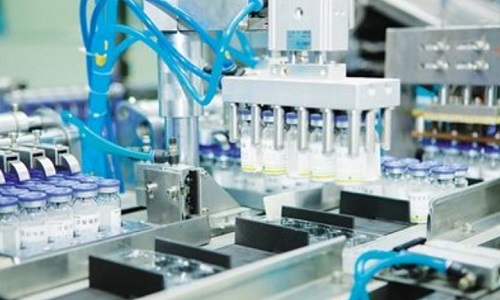Good Manufacturing Practices (GMPs) for Pharmaceutical Products

What is GMP?
GMP (Good Manufacturing Practice) is a part of quality assurance that ensures that products are consistently produced and controlled to the quality standards appropriate to their intended use and as required by the marketing authorization. It is enforced in the United States by the US FDA, under Section 501(B) of the 1938 Food, Drug, and Cosmetic Act (21 USCS § 351).

Good Manufacturing Practices (GMPs) for Pharmaceutical Products
GMPs for Pharmaceutical Products
Many countries have legislated that pharmaceutical and medical device companies must follow GMP procedures, and have created their own GMP guidelines corresponding with their legislation. Basic concepts of all of these guidelines remain more or less similar to the ultimate goals of safeguarding the health of the patient as well as producing good quality medicine, medical devices or active pharmaceutical products. In the U.S. a drug may be deemed adulterated if it passes all of the specifications tests but is found to be manufactured in a condition that violates current good manufacturing practice guidelines. Therefore, complying with GMP is a mandatory requirement in pharmaceutical manufacturing.
A Guideline for Pharmaceutical Products
Although there are a number of them, all guidelines follow a few basic principles:
- Operators are trained to carry out and document procedures.
- Instructions and procedures are written in clear and unambiguous language. (Good Documentation Practices)
- Manufacturing processes are clearly defined and controlled. All critical processes are validated to ensure consistency and compliance with specifications, and any changes to the process are evaluated. Changes that have an impact on drug quality are validated as necessary.
- Records are made, manually or by instruments, during manufacturing to demonstrate that all the steps are performed as required by the defined procedures and instructions and that the quantity and quality of the drug were as expected. Deviations should be investigated and documented.
- Records of manufacture (including distribution) that enable the complete history of a batch to be traced are retained in a comprehensible and accessible form.
- The drugs should be distributed in such a way that any risk to their quality is minimized.
- A system is available for recalling any batch of drug from sale or supply.
- Complaints about marketed drugs are examined, the causes of quality defects are investigated, and appropriate measures are taken with respect to the defective drugs and to prevent a recurrence.
What are good manufacturing practices examples?
Pharmaceutical products must be properly identified, cleaned, and maintained to prevent cross-contamination. Facilities must be suitable for their intended purpose with proper lighting, air handling, plumbing, and sanitation. Records to demonstrate GMP compliance must be properly maintained.
Conclusion
Now you know about Good Manufacturing Practices and why they are essential. Regardless of the type of manufacturing facility, GMP is a critical part of running a high-quality facility. By being GMP compliant, facilities make a strong effort to create a safe, high-quality, and sanitary environment to create safe and high-quality products for consumers. They are standards to strive for, particularly for facilities producing products that people consume, like pharmaceuticals and, of course, food. Adamant Valves supplies high-quality sanitary valves for the pharmaceutical industry.




